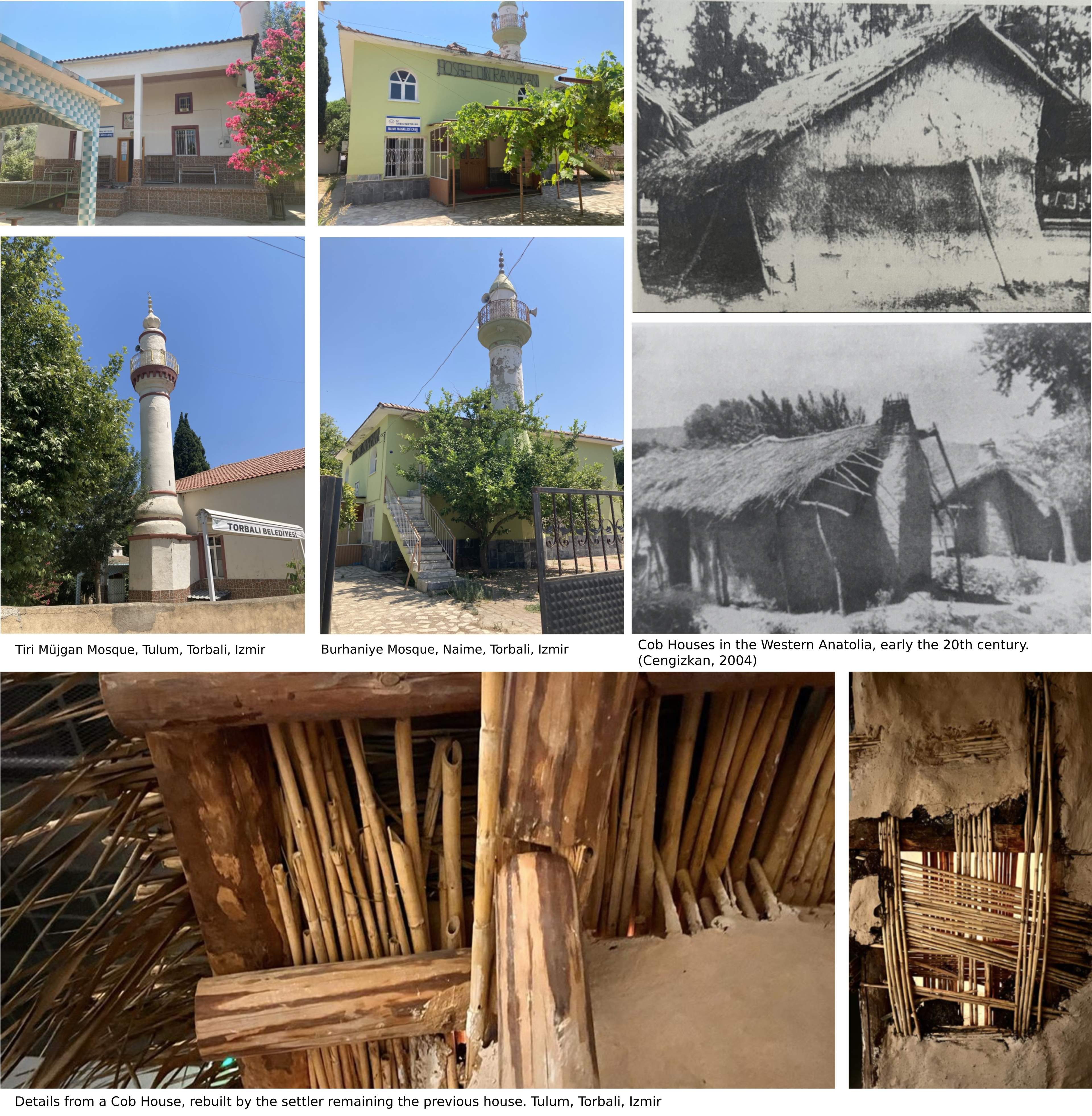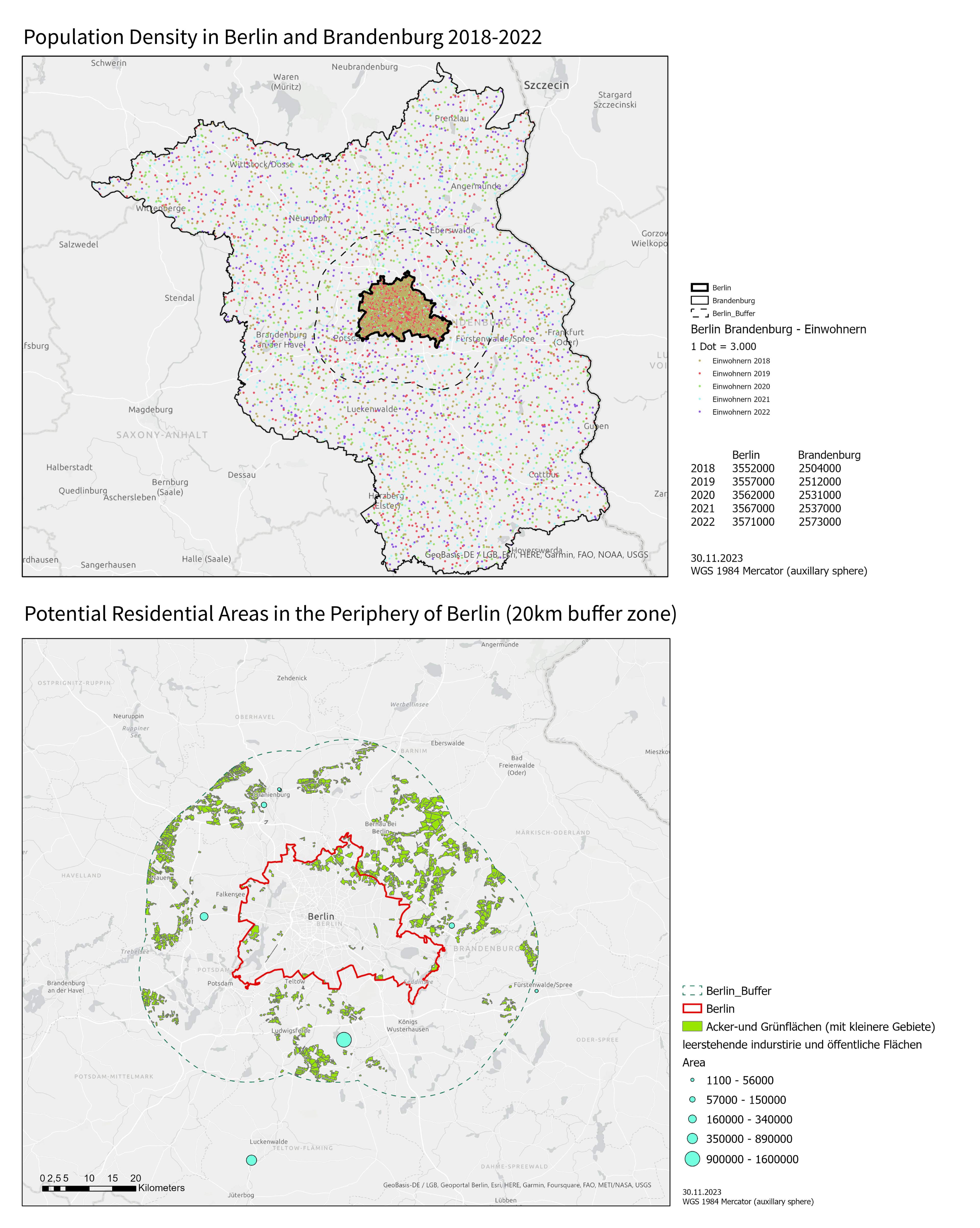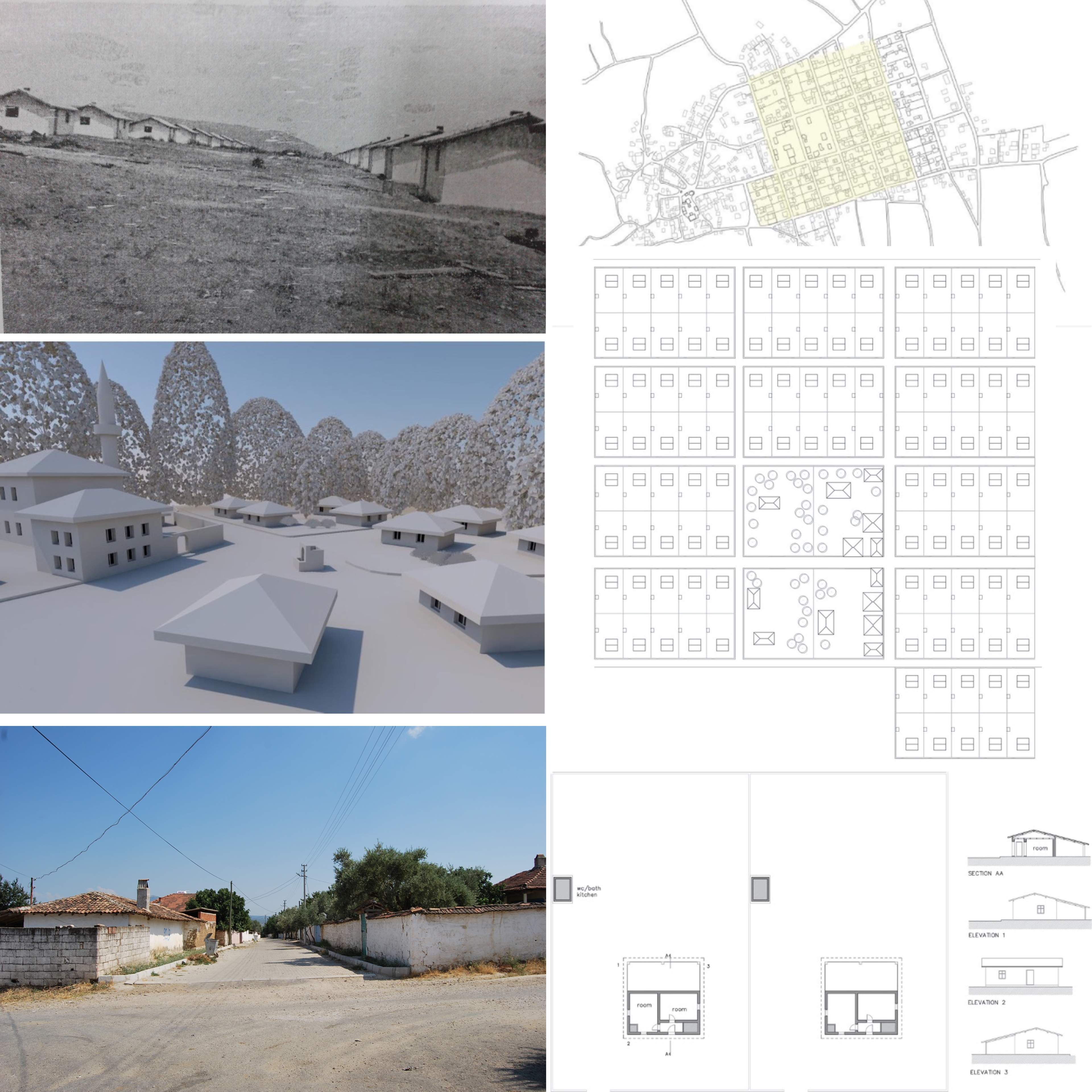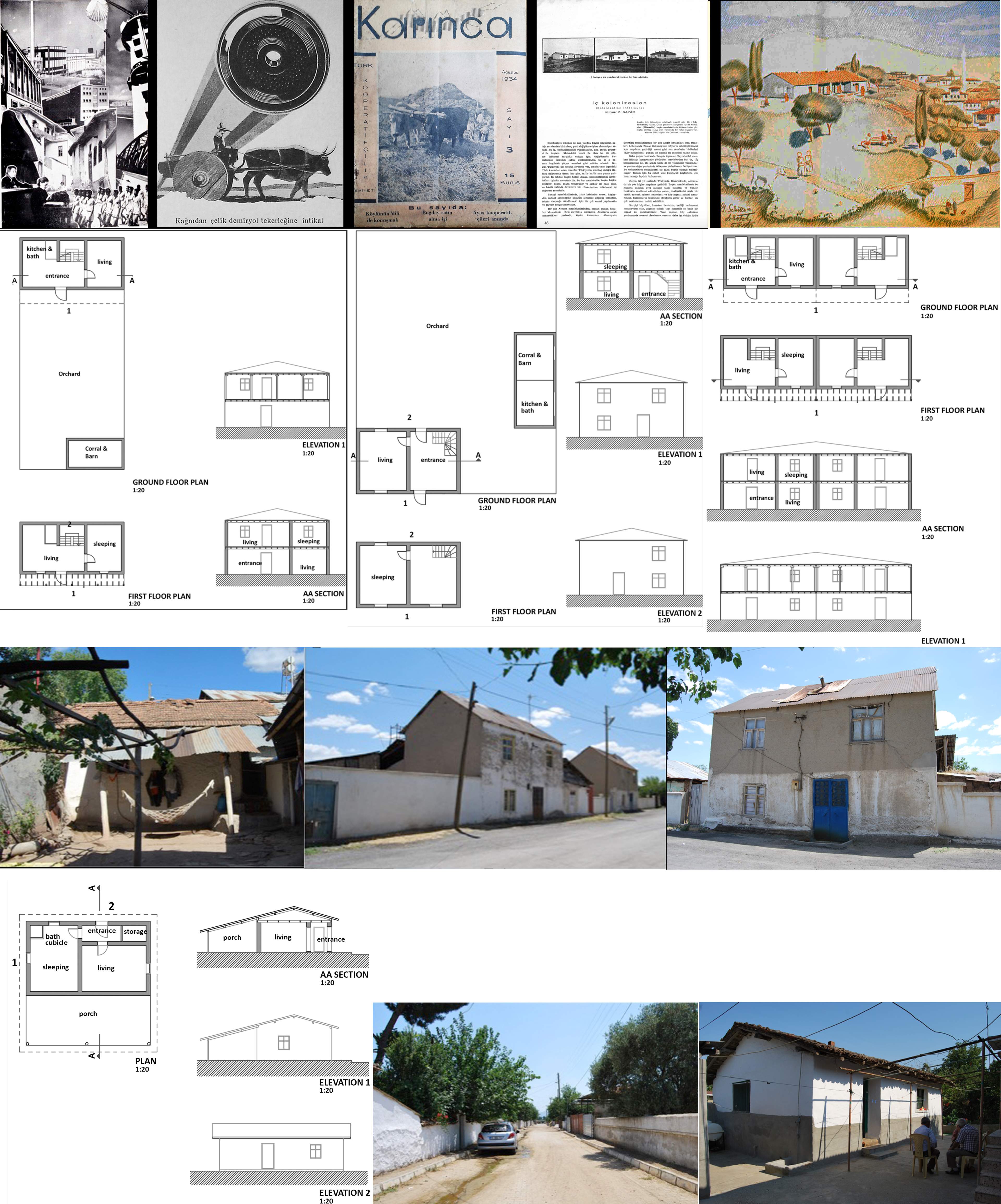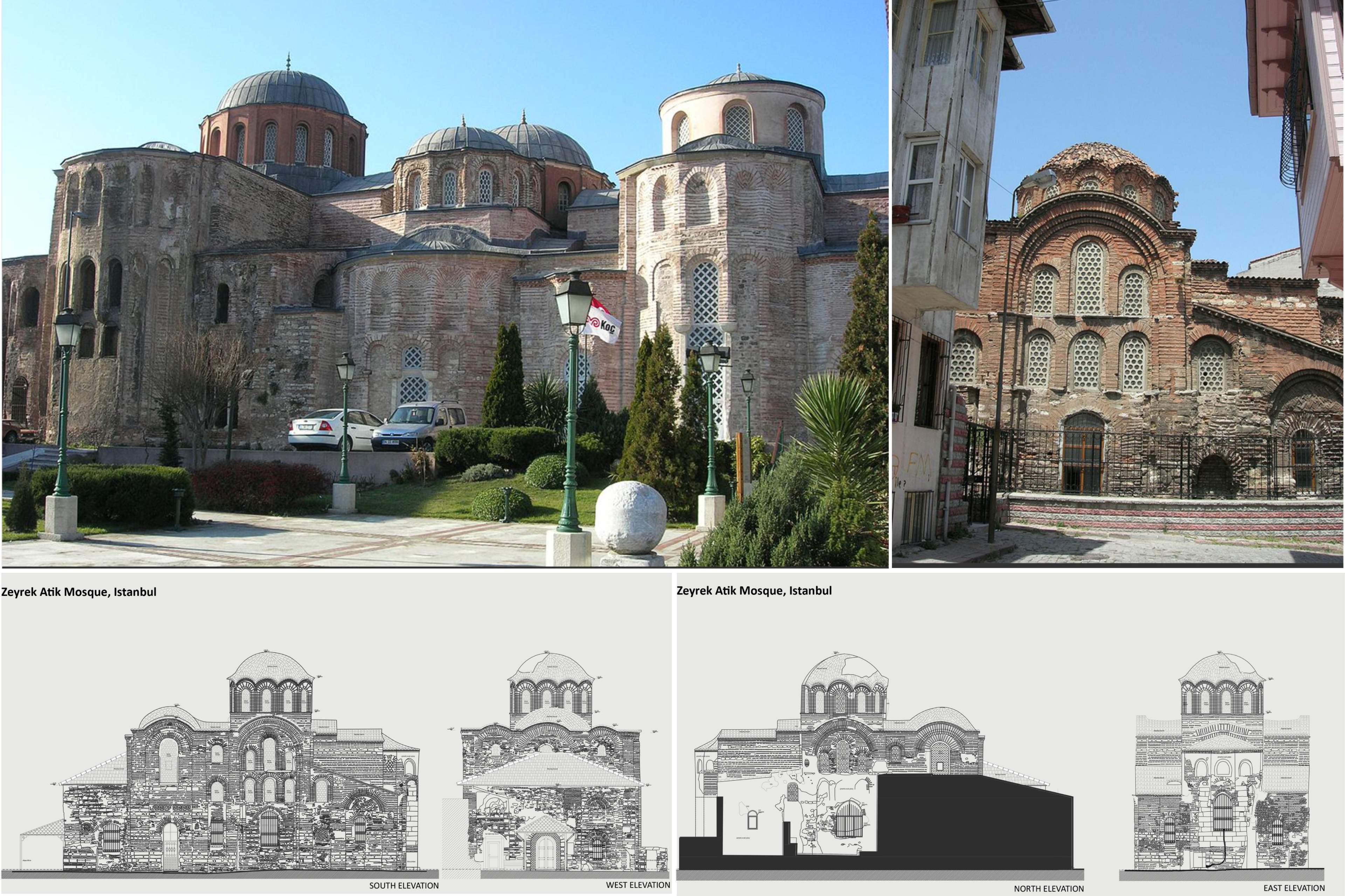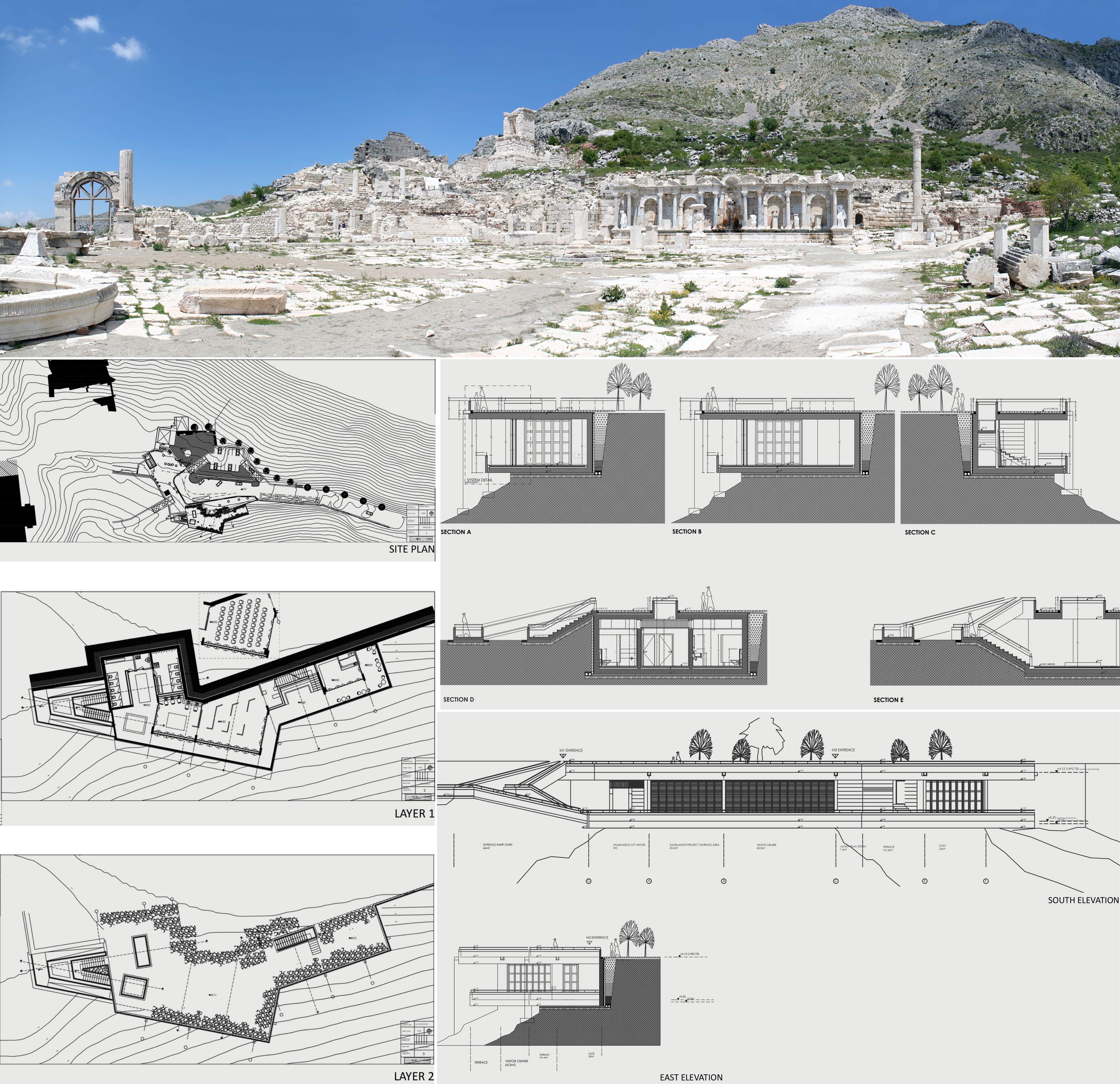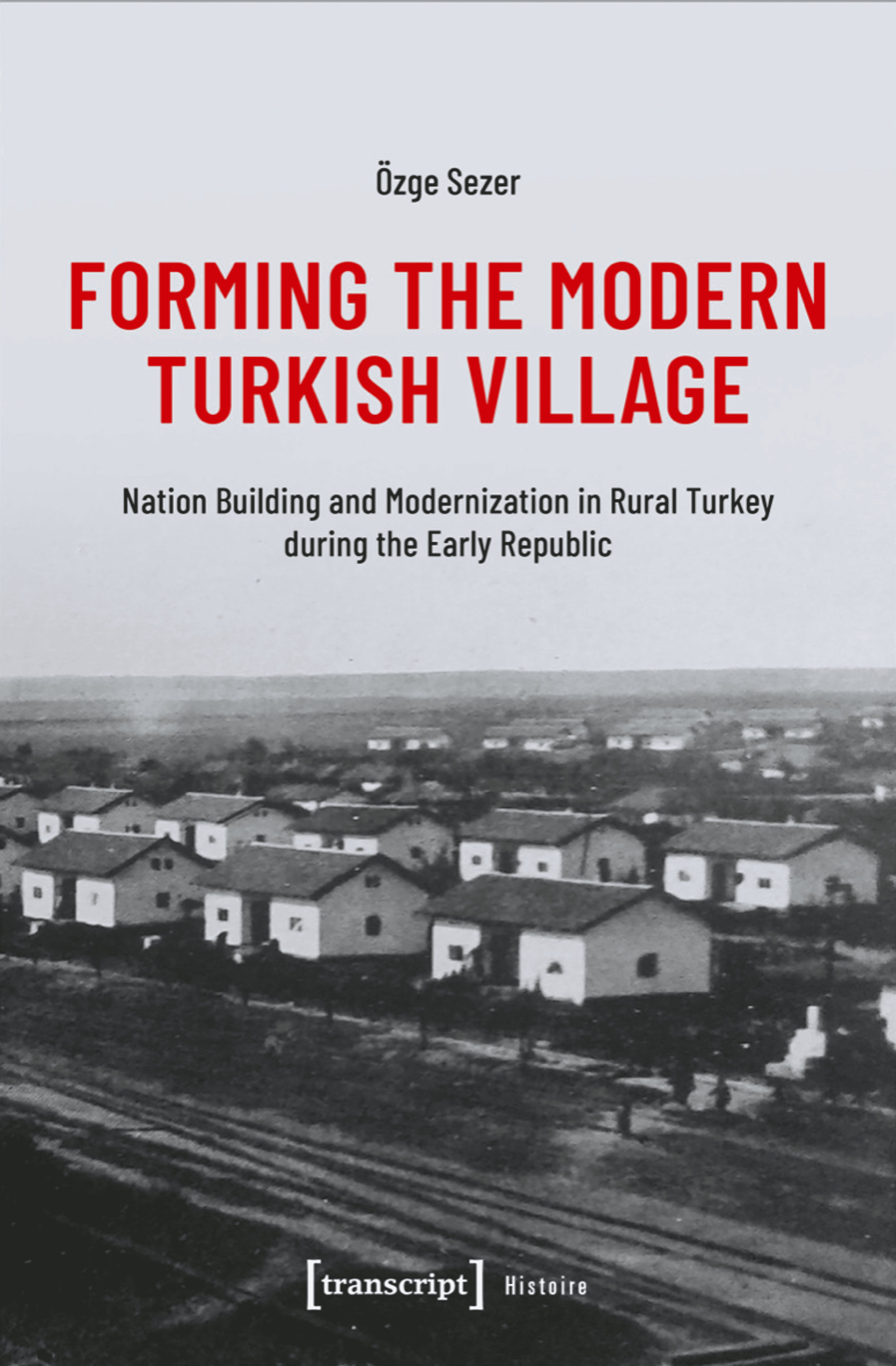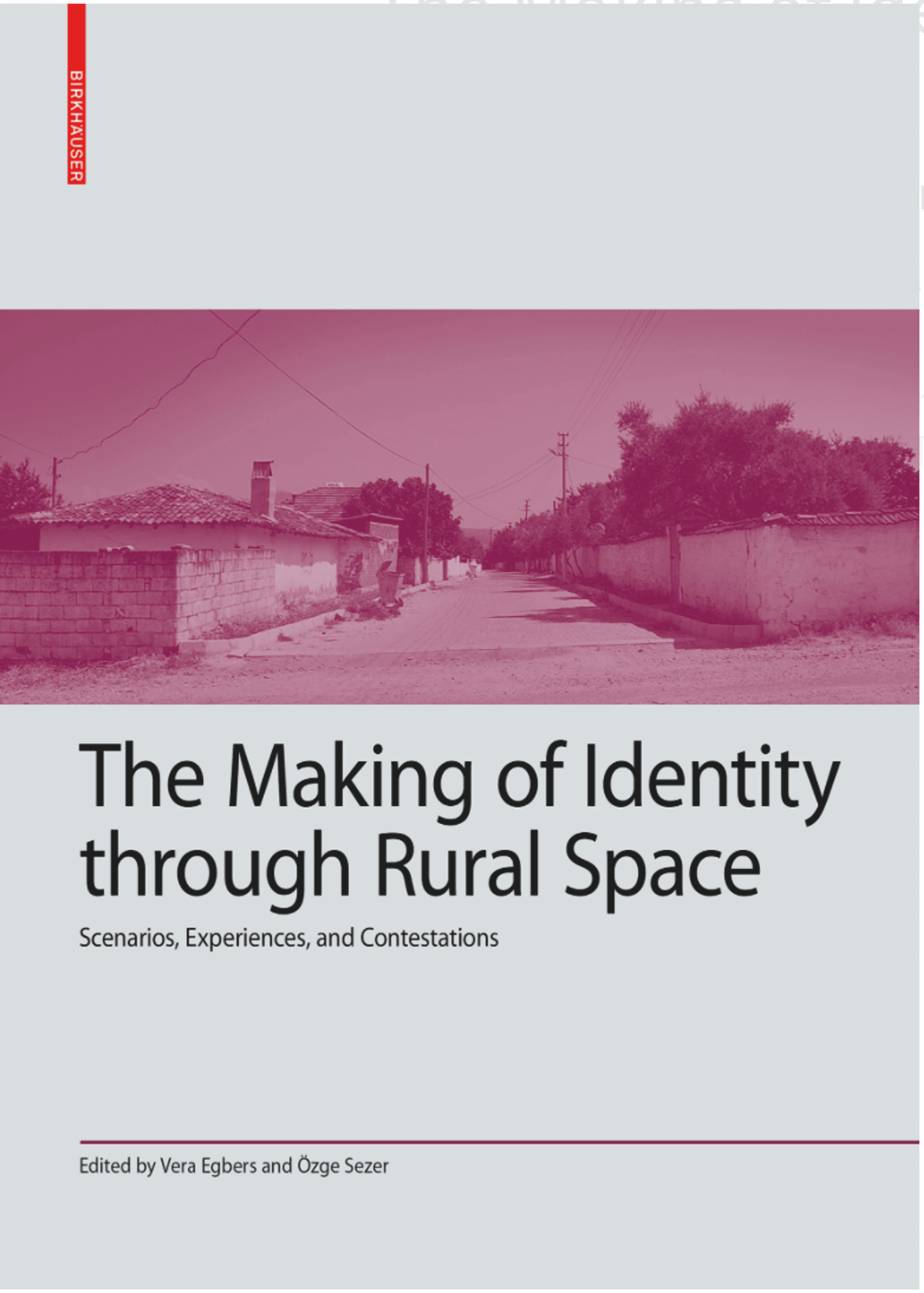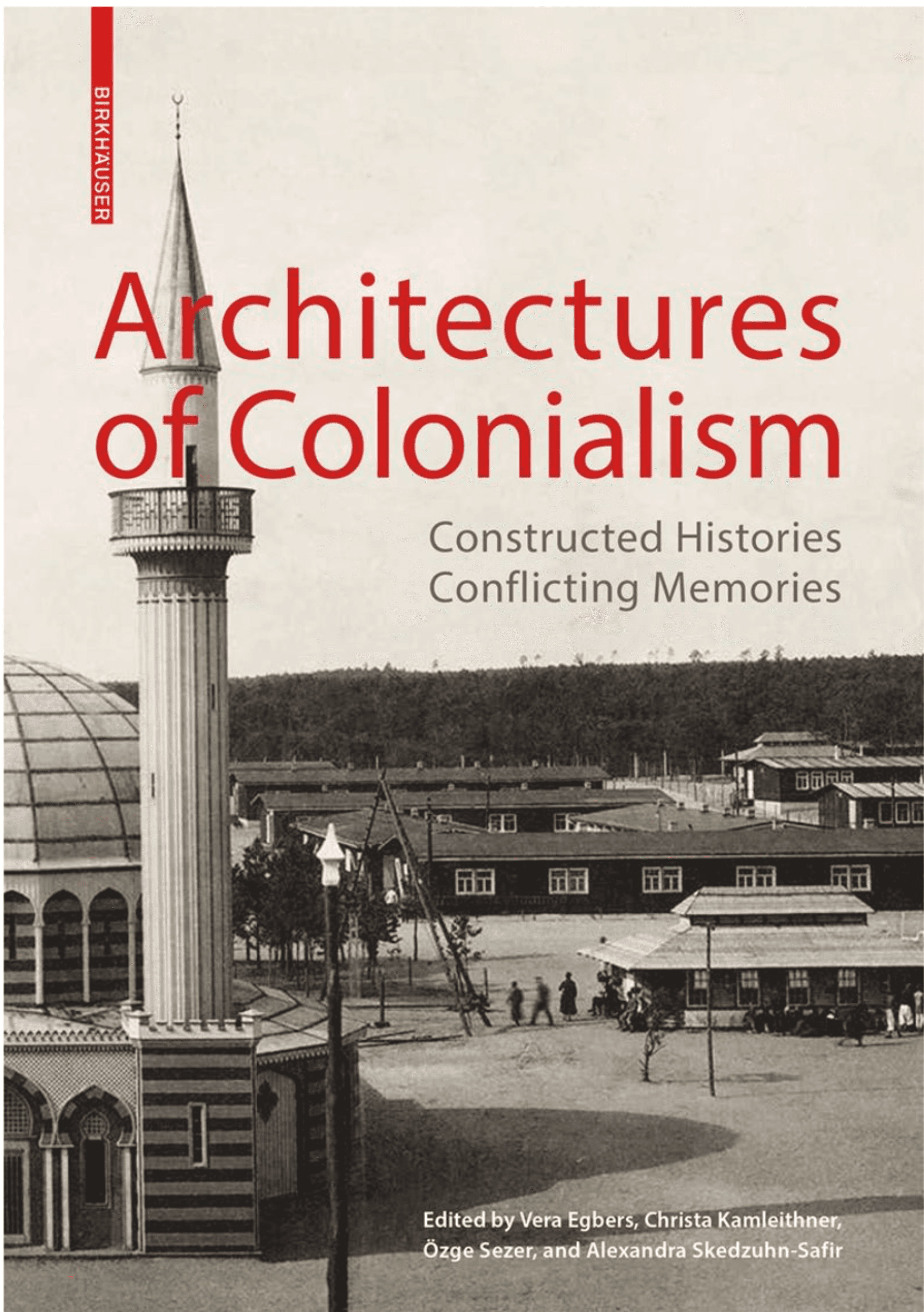Projects
selected
Afro-Turks and Rethinking Rural Communities in Turkey
This project explores the spatial and architectural legacy of Afro-Turks—descendants of formerly enslaved Africans resettled in rural western Anatolia during the late Ottoman period. Focusing on villages like Naime, Tulum, Sepetçiler, and Subaşı, it examines how state-led settlement policies intersected with vernacular African building traditions.
The Ottoman state's architectural agenda—mosques, schools, and centralized layouts—served as instruments of internal colonization, shaping what I term the “whiteness of space”: a spatial expression of control, assimilation, and ideological authority. In contrast, the modest, self-built homes of Afro-Turkish settlers—timber-framed, cob-filled, often thatched—embody cultural memory and architectural resistance.
Through fieldwork, archival research, and oral histories, this study reveals how Afro-Turkish communities negotiated imposed environments, leaving behind a hybrid rural landscape where identity, heritage, and power are inscribed in space.
Research Project associated with BTU Cottbus-Senftenberg 07.2023-01.2025
Potential Residential Areas in the Periphery of Berlin
To meet the growing demand for housing in the Berlin region, this project focuses on a careful site search for new residential areas in the periphery of the city with a 20 km buffer zone.
The primary goal is to identify and recommend optimal areas for sustainable and community-oriented residential development.
We use advanced GIS technology to analyze factors such as transportation accessibility, proximity to amenities, and environmental conditions.
We focus on two potential spatial aspects when looking at the project objectives in more detail:
1. convenient rural land.
2. vacant industrial sites, military domains, and public places.
ArcGIS Project WBS Berlin 08.2023-12.2023
Internal Colonization as a Way of Modernization? Contested Spaces in Rural Turkey before and after the Foundation of the Nation-State
In this project, we aim to further investigate the motivations and consequences of a governmental construction and ideology program leaning on the concept of Internal Colonization.
The cooperation of an architect and an archaeologist comes with the advantage of complementing the view of diachronic change and adaptation on the one hand, with the synchronic, technical view of the current state on the other in an in-depth interpretation of these particular rural settlements.
We focus on Yeniköy village in Izmir, in the western part of Turkey and empirically analyze two cores of the settlement considering architectural planning, material use, and user contribution.
Post Doctoral Research Project BTU Cottbus-Senftenberg 01.2020-07.2023
Idealization of the Land. Forming the New Rural Settlements in the Early Republican Period of Turkey, 1923-1950
My doctoral work includes spatial analysis of seven villages in Turkey. The field research consists of site planning, the building program, the house typology and plan arrangement, the use of space, the building material, a comparison of current and former conditions of the site, and interviews with the residents to grasp the use of space and memory of space among the people.
With this study, I re-open the discussion of Turkey’s nation-building and modernization processes from a perspective projected to the rural ideals. By analyzing village planning in the early republican period, I demonstrate how the policies of early republican authority controlled rural Turkey in economic, social, and cultural terms, and altered the environment of the village community.
Doctoral Project TU Berlin 2013-2019
Restoration Project of Zeyrek Atik Mosque, Istanbul
Zeyrek Atik Mosque - formerly Monastery of the Pantocrator, emerges as one of the most significant examples of transformation of religious archtiecture in Istanbul.
The restoration project consisted of historical documentation, field survey projects and proposal for a historical preservation of the building.
I participated in historical research, survey and drawing processes.
GOZE UNER Architects 02.2014-09.2014
Sagalassos Excavation Center, Burdur
The project has been generated in the frame of Sagalassos Excavation in Burdur, Turkey. The architects aimed to provide a building which serves for first information for the visitors, as well as the working and meeting areas for the excavation team.
I participated in design process, architectural drawings and detailing of the project.
GOZE UNER Architects 02.2014-09.2014
Publications
selected
Forming the Modern Turkish Village. Modernization and Nation Building in Rural Turkey during the Early Republic
During the early republican period, architectural interventions in rural Turkey took the form of social engineering as part of the state's modernization and nationalization policies. Özge Sezer demonstrates how the state's particular programs had a powerful effect on rural life in the countryside. She examines the regime's goals and strategies for controlling the rural people through development projects and demographic shaping to create a strong Turkish identity and a loyal citizenry. The book outlines the implementation of new rural settlements, particularly following the 1934 Settlement Law, with a geographic focus on two cities – Izmir and Elazig – with varied socio-economic and ethnic standing in the state program.
Özge Sezer
Transcript Verlag, 2022, Histoire
The Making of Identity through Rural Space. Scenarios, Experiences and Contestations
Though sometimes overlooked and underestimated, rural space has played a substantial role in social, cultural, economic, and ideological change. This role can be studied by looking at the re/production of spatial agents that were caused by direct or indirect political interventions in rural communities. In this book, scholars looking at case studies from Greece, Turkey, Italy, Portugal, and Austria discuss the making of identity in and through rural areas, which have dramatically changed under different political, social, and economic conditions from the turn of the 20th century up until today. By focusing on potential contestations of such changes, the authors provide a better in-depth understanding of spatial dynamics related to cultural and social spheres of 20th-century rurality.
Includes contributions of national and international experts
Deals with 20th-century rural environment and identity-making policies
Findings of an international symposium of DFG Research Training Group "Cultural and Technological Significance of Historic Buildings", Brandenburg University of Technology (BTU) Cottbus-Senftenberg.
Edited by: Vera Egbers, Özge Sezer
Birkhäuser, 2024, Volume 10 "KULTURELLE UND TECHNISCHE WERTE HISTORISCHE BAUTEN"
Architectures of Colonialism. Constructed Histories, Conflicting Memories
The question of what heritage is and how we deal with it is not a neutral one. Recent events such as the Black Lives Matter movement and the toppling of monuments have made evident how much the colonial past is inscribed in our built environment; at the same time, colonialism affects memorialization and historiography. Hence, those involved in architectural history are challenged to re-consider their positionality. Whose heritage are colonial sites? Which conflicting memories are attached to them? How are archives and material evidence reassessed to bring forward the stories of marginalized subjects? Following the call for decolonization, this volume explores historical methodologies and shows the entanglement of narratives at architectural sites, bringing together archaeology, architectural history, and heritage studies.
A contribution to the current debate on decolonization and memorialization
Interdisciplinary perspectives on architecture and heritage
International range of authors
Edited by: Vera Egbers, Christa Kamleither, Özge Sezer, and Alexandra Skedzuhn-Safir
Birkhäuser / De Gruyter, 2024
